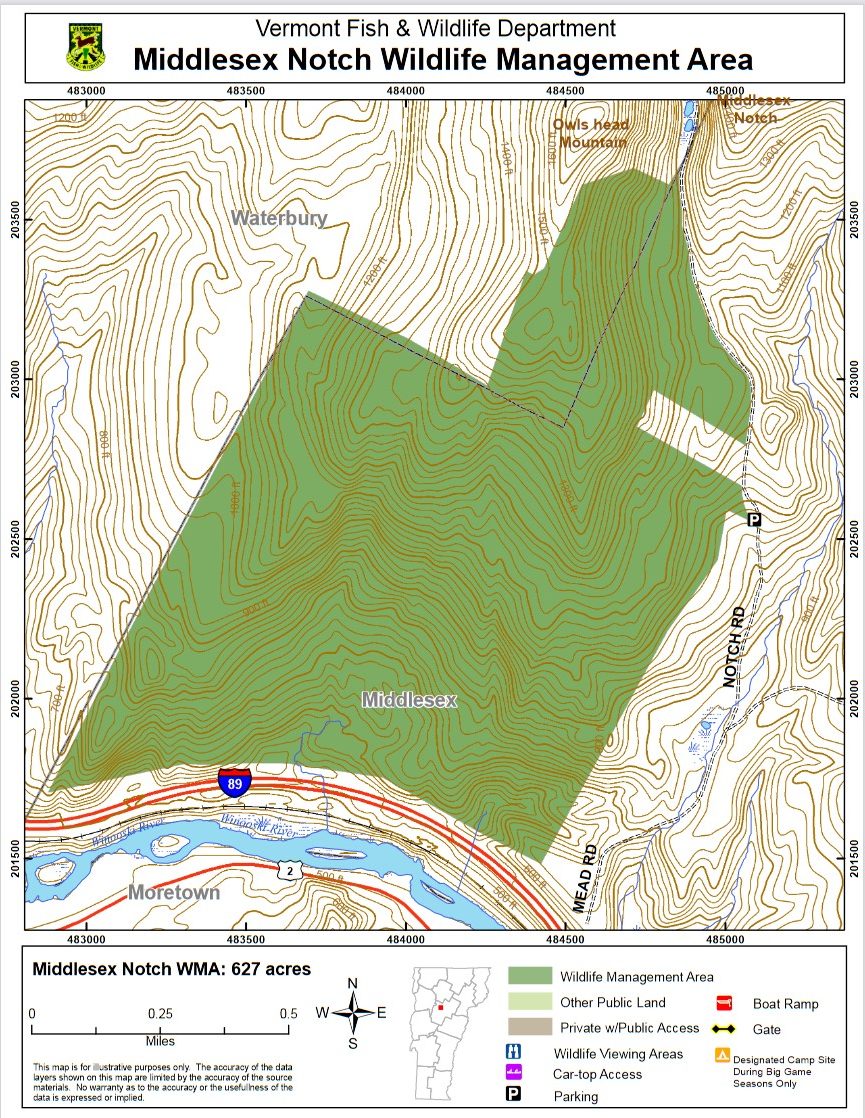Middlesex Notch WMA
Birds of Interest
Ruffed grouse and wild turkey can be found in Middlesex Notch Wildlife Management Area, as well as songbirds associated with deciduous tree species.
About this Location
Middlesex Notch Wildlife Management Area (WMA) is located in the central Vermont towns of Middlesex and Waterbury. The WMA is 627 acres in size. Located on the Middlesex/Waterbury town line, it is bounded by Interstate 89 to the south and Owlshead Mountain to the north. Middlesex contains the largest share of the WMA at 580 acres; 47 acres are in Waterbury. The WMA is owned by the State of Vermont and is managed by the Vermont Fish and Wildlife Department.
Access to the WMA is from Exit 9 of Interstate 89, then north on Center Road to Notch Road. There is a developed parking area on Notch Road. Notch Road continues as an unimproved road into Middlesex Notch, east of Owlshead Mountain.
The WMA lies within the Winooski River watershed. There is a small intermittent stream present in the mid-southern portion of the WMA which drains into the Winooski River. Elevations range from 1,500 feet in the north to 500 feet as the land grades south to Interstate 89. The aspect is generally southwest and the terrain has many undulating ridges and draws.
The property is completely forested with northern hardwoods such as sugar maple, yellow birch, and beech, as well as a large red oak component. Of the 627-acre WMA, approximately 200 acres have red oak as the principal overstory species. Due to the concentration of red oak, this area is an important feeding area for a variety of wildlife species, particularly black bears.
Features
Restrooms on site
Wheelchair accessible trail
Entrance fee
Content from Middlesex Notch Wildlife Management Area guide and map
Last updated December 3, 2023
